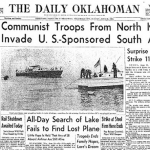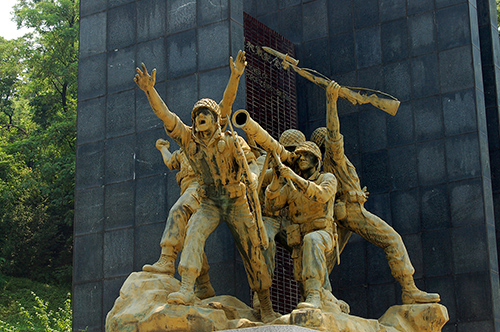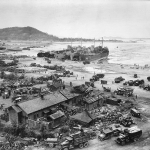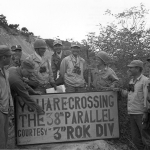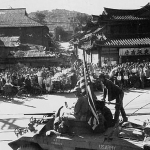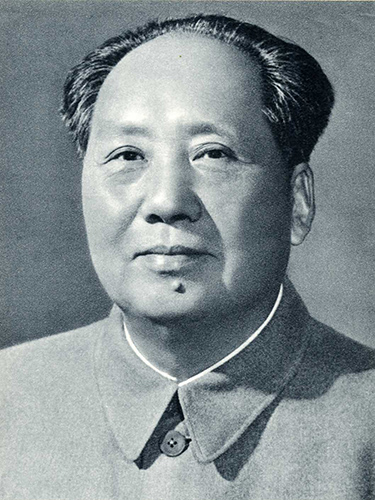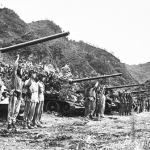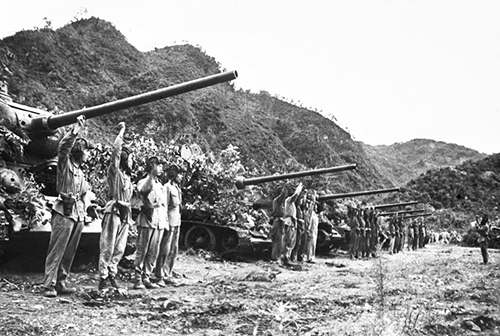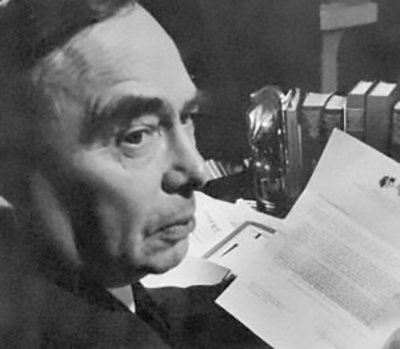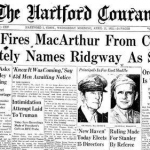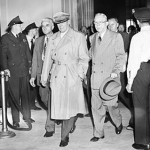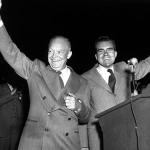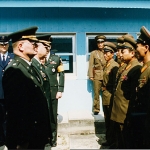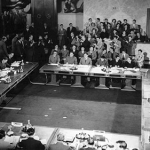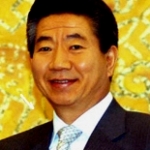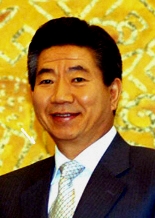Korean War 1950-1953
History
Having once been part of the Japanese Empire, Towards the end of World War II, Korea was divided along the 38th parallel into a Communist northern half backed by the Soviet Union and an American-occupied southern half. Tensions rose between the United States and the Soviet Union in what has been deemed The Cold War, in which they did not engage directly but instead assisted in multiple Proxy Wars. One of which was the Korean War that started in June of 1950 when the North Korean army crossed the 38th parallel armed with Soviet tanks to quickly overrun South Korea. The United States quickly came to South Korea's aid. General Douglas MacArthur, who had been overseeing the post-WWII occupation of Japan, commanded the US forces who came to hold off the North Koreans at the southernmost tip of Korea at Pusan. Korea held no strategic importance for the U.S., however not wanting to look soft on Communism they took the threat quite seriously and heavily influenced the U.N. to sanction their entrance into this Korean War.
Having only the smallest foothold at Pusan, MacArthur decided on an amphibious assault on a port at the western coast of Korea called Inchon. With a successful landing he further deployed his troops in a pincer formation that took back the South Korean Capital of Seoul. After taking back South Korea, MacArthur wasn’t satisfied as the war changed from a defensive strategy to rid South Korea from invaders into an offensive one against communism itself. He deployed his troops across the 38th Parallel and pursued the North Korean Army all the way up towards the northernmost provinces. Initially a success, there were backfalls as it was one of the hottest and driest summers on record. American soldiers often became sick after being forced to rely on rice paddy water that had been fertilized with human waste. U.S. Forces soon found themselves near the Chinese border at Yula River. This action caused leaders in the People’s Republic of China to fear the US was interested in taking North Korea as a base of operations against Manchuria. They sent an army to covertly cross the Yalu River and attack the US/UN/ROK forces.
President Truman had hoped to end the war quickly, but with the Chinese stepping in and the possibility that the Soviets might as well, Truman pressed MacArthur to ease back. MacArthur, however, saw this as buckling to the communists and was garnering for nothing short of all out war against communist China. In an act of insubordination, MacArthur penned a letter detailing his thoughts to be leaked to the American public. For this act, Truman fired the popular war hero and appointed Lt. General Matthew Ridgway as the new commander of ground forces. Under new leadership strong fortifications and entrenchments were held just north of the 38th parallel. Ridgeway sent occasional offensives against the Iron Triangle, a communist stronghold and staging area. American morale began to improve and the initiative begin to swing against the Chinese Communists.
In July of 1951 Peace talks begin at Panmunjom while military confrontations on the ground and in the air continued. Negotiations dragged on while Communists refused to budge specifically on the issue regarding prisoner of war repatriation. Neither side wanted to appear weak and thus occasionally talks would break down for months at a time. It was only after Eisenhower, a war hero, was elected that a treaty was finally signed. Unafraid of republican criticism, as a republican himself, he made substantial concessions in order to get a treaty signed. Korea returned to essentially the same divided state that it was before the war began, with South Korea gaining an extra 1,500 square miles of territory along with a 2 mile wide “demilitarized zone” that still exists today. Tensions on all sides continued on through the Cold War era.
Although, the Korean War was relatively short, it was also exceptionally bloody. Overall, approximately 5 million people lost their lives. More than half of these were civilians of North and South Korea. This rate of civilian casualties was higher than WWII or Vietnam. Nearly 40,000 Americans died in action on Korean battlefronts, while more than 100,000 were wounded. To this day the relationship between the governments of North and South Korea remain antagonistic.












